| Umělec magazine 2007/3 >> SUNDAYMORNING | List of all editions. | ||||||||||||
|
|||||||||||||
SUNDAYMORNINGUmělec magazine 2007/301.03.2007 Arlene Tucker a Sarah Lippek | wandering | en cs de es |
|||||||||||||
|
Three Young Women Venture to the Abandoned Small Pox Hospital on Roosevelt Island, a Former Welfare Colony Neighboring Manhattan.
In New York, walking into an office-tower— one in which you have a perfectly legitimate and professionally mandated appointment with a consenting host—can involve numerous permutations of the Checkpoint. Signing in, providing identification, allowing the scanning of identification, accepting the issuance of temporary photo-identification, accepting a barcode, a sticker, providing name, address, purpose, calling ahead, walking with an escort. The streets, too, are under heavy surveillance. Thousands of cameras whir to themselves, night and day, on poles, on wall faces, in parking garages and astride roads and bridges. The sensation of solitude is eroded here. The city admixes surveillance with disregard—you are monitored but not seen, followed but not desired, available but not sought. The interstices between lines of vision are closing fast. There are very few blind spots remaining in the city, very few privacies in the public realm. In this context, it seems almost greedy to expect escape, let alone to expect it in the middle of the East River, on Roosevelt Island. And yet, at the southern tip of the island between Manhattan and Queens, in an artificial meadow blessed by sweeping skyline views in two directions, there stands a ruined castle, an abandoned place untouched by the dictates of purposefulness. This ruin is an unwatched place. The Roosevelt Island Smallpox Hospital has been empty for more than fifty years. Early enough in the day to feel like the islanders were snoozed down, we three girls sneak through the chained fence. Looking both ways with eyes behind our backs, we pass a fisherman with a “perfectly normal” hello, as if we’re up to nothing at all. With this many beating hearts in one city, you’re never alone. Eyes: from a distant camera or from behind a hidden curtain. It seems that nothing can be hidden in a place like New York City. Americans are taught vigilance by the slogans pasted all over the subways: “If you see something, say something.” As preparation to the blood running risk of the task, we are confident enough to sturdily ignore the signs warning of illegal trespassing. Reaching the ruins requires a mild case of breaking and entering. Streams of questions: what if somebody was to find us? What would we say? Good-bye and we will never do that again. Past the chains, the cement seems hotter, the road seems erupted, trees seem breezier, and the windows of Manhattan and Queens are close enough to hit with a rock. Approaching the ruins through the shade cast by billowing green weeds, along a muddy track marked by cats’ paws, we see the façade leaning wearily, crowded with vines, no longer imposing. Craftsmanship is visible, but the flickering vegetation is more intricate and more impressive. The stone is collapsing in slow motion. A wall curves precariously outward at the top, falling-notfalling, a wave suspended, moments before crashing to the beach. For the moment, all exuberance has to be contained. Secrecy initiates the hunchedover posture, a neck braced with hinges that move your head from side to side. It’s kind like an inverted shadow nodding no no no to something it really wants. Enormously smiling and bewildered, we finally make it into the building, which is airy, the rock set cool by all the rubble. Dust has settled, leaving the humidity crawling at our calves with bits of tall grass. Destruction, desertion, and melodic droning weave in so subtly that we have to remind ourselves to remember. The walls are gently leaning piles of brick; the windows have grown, gaping wider than intended, letting in more light, more sight. Most of the ceilings have gone altogether: the first story is open to the second story; much of the second story is open to the sky. Through the gaps in the brick, we can see the bright path that rounds the tip of the island. When a jogger bounces into sight on the path, we hiss at each other to get down, stay quiet. We don’t want to be seen. We’re on the wrong side of the fences. We internalize our censors; we monitor ourselves, building watchtowers behind our foreheads. We imagine dog-walkers and out-for-a-morning- strollers to be agents of the state, and we duck to hide from them. Taking it all in, we three gravitate towards the building’s north end, where we take the mild challenge of a climb through a high window. Helping each other with height and strength, we make it to the second level. To the left, open space, a shaft that alludes to a missing staircase, retaining the remnants of iron zigzags, and straight ahead lie huge floorless rooms populated by overgrown trees as patients. The room to the right feels livedin: gilded with mermaid graffiti, studded with mysterious bolts in the walls, shadowed by hovering trees, littered with Brooklyn Lager bottles and Besos tags. Everything coated with a fine greenish dust that seems to emanate from the trees that crowd the windows. We wonder at the way an empty room can feel so occupied. The room’s surfaces are a layered pastiche of spray paint, marker, lipstick. These are vestiges of people, but somehow the residue of fingerprints leaves more than just a sign of life. Every fingertouch is embedded in the stone. Every occupation generates another ley line. They’re worming through the structure, they’re dissolving the walls and pushing the present down with the weight of the past. Naturally, one expects ghosts. Emptiness seems impossible even when it is knocking on your forehead. There is a heightened sense of possibility. This is a place where rules do not apply, a post-human space. Floors may shift underfoot; a wall may turn to powder; nothing is solid or entirely trustworthy. The senses have extra work to do. We cannot depend on assumptions, so each step is experimental. Our eyes are eager and darting, our nostrils flare. The awareness is vivifying. Any corner could conceal an impossibility. A severed hand, a glittering chandelier with candles burning, a cat made of smoke. But none of these things appear. The atmosphere is relentlessly cheerful. This place, which has harbored so much human suffering, is flattening itself out. Left alone, the hospital that became a ruin will become a mere hillock, covered in grass. The ghosts are settling in to a peaceful burial mound. Sunlight dapples the moth-soft dust, hopeful saplings thrust up their thin straight trunks. The stone and its memories are returning to the source, wandering back down into the island. When the ruins are gone, we will have only the historical record to remind us that the structure ever stood. The Smallpox Hospital was completed in 1856, as sickness ravaged New York City. It was designed by James Renwick, Jr, an architect whose name is followed, in most accounts, by words such as prominent and respected, fashionable and successful. He worked on several still-standing New York buildings, including the muchadmired Grace Church. The church is built to mimic the grandiosity of a medieval cathedral, but constructed of wood and plaster rather than stone. Renwick’s later portrait photographs show him brandishing a fierce bristle of white beard. The hospital was not named after its designer, but now that the structure is decayed, softened and abandoned, it’s called the Renwick Ruins. The stone of the façade is grey gneiss, stone that was quarried here from a pit in the island itself, mined by prisoners. The stone was pulled out from under the soil and the roots of plants, disrupting the surface. The guts of the island were rearranged. From lumps and shards and stretches of noble variegation rose a tower, pushed with human hands into box-shapes, room-shapes, planes marked by regular, even windows. All that tumbling massy stone rose up in an ordered configuration. Thanks to slave labor, the entire endeavor cost a mere $38,000. The Landmark Preservation Committee was impressed, in 1975, by this fine exemplar of the Crenellated Gothic Revival Style: “The entry is further enhanced by the massive tower-like structure above, with recessed gothic pointed arch on corbels and crowned by crenellations and a smaller freestanding pointed arch.” These details have blurred since 1975. Between the triumphal placement of the final brick (was there a ribbon-cutting ceremony? Champagne on the lawn? Were the prisoner-laborers cheered by city functionaries in silk cravats?) and the 1975 declaration of the site as a relic, the hospital functioned for most of its inhabited life as a quarantine site. Built by prisoners to wall the sick and contagious away from their uninfected peers. Staffed by prisoners, as well, expendable humans who were classified among the infected, consigned to the 30% chance of death that accompanied a smallpox infection. Hospitals can be thought of as places of healing, where ill people are cared for. The records of the Roosevelt Island Smallpox Hospital serve to remind us that hospitals are also designed to divide the well from the unwell, to concentrate contaminants and wall off the contaminated from public interaction. Quarantine meant, for many, a form of active abandonment. A stay in the quarantine hospital could mean rotting food, rats, death. The ruins, the fact of their ruination, embody the split-screen division of internalized surveillance in New York City. This is a place built to scrutinize, monitor, and restrict, but one that simultaneously enacted neglect and disregard. Surveillance and abandonment. What’s now called Roosevelt Island was once known as Welfare Island. In addition to the Smallpox Hospital and the prison, the island housed a mental institution, a work house, and a research laboratory. It was an institutional zone, a place of sequestration, separated from the city’s everyday life by the deep East River. Now the ruined hospital has inverted its purpose. From a place of confinement to one of solace. We three adventurers have to break in; we seek the sequestration that was forced on so many others. The neglect that killed in quarantine has become a soothing solitude. Dusty slants of quiet light, doors that hang askew and twenty feet above the nearest floor, gardens gone rioting through windows and over walls. Isolation never felt so warranted. We are sad to leave, pushing through high green growth into a dazzle of midday sun. Through the fence, back into the city. Joggers pass by in their headphones. If we are seen, no one says anything.
01.03.2007
Recommended articles
|
|||||||||||||
|
04.02.2020 10:17
Letošní 50. ročník Art Basel přilákal celkem 93 000 návštěvníků a sběratelů z 80 zemí světa. 290 prémiových galerií představilo umělecká díla od počátku 20. století až po současnost. Hlavní sektor přehlídky, tradičně v prvním patře výstavního prostoru, představil 232 předních galerií z celého světa nabízející umění nejvyšší kvality. Veletrh ukázal vzestupný trend prodeje prostřednictvím galerií jak soukromým sbírkám, tak i institucím. Kromě hlavního veletrhu stály za návštěvu i ty přidružené: Volta, Liste a Photo Basel, k tomu doprovodné programy a výstavy v místních institucích, které kvalitou daleko přesahují hranice města tj. Kunsthalle Basel, Kunstmuseum, Tinguely muzeum nebo Fondation Beyeler.
|







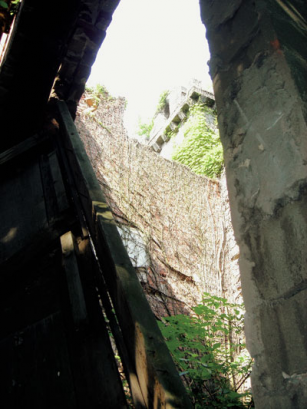
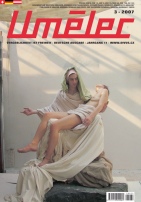















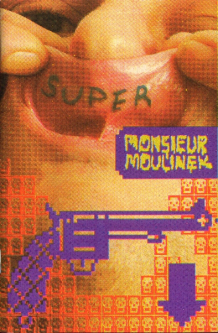




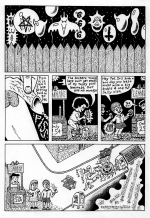
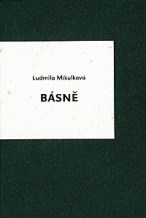

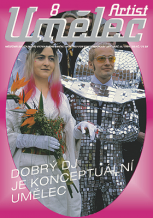


 New book by I.M.Jirous in English at our online bookshop.
New book by I.M.Jirous in English at our online bookshop.
Comments
There are currently no comments.Add new comment